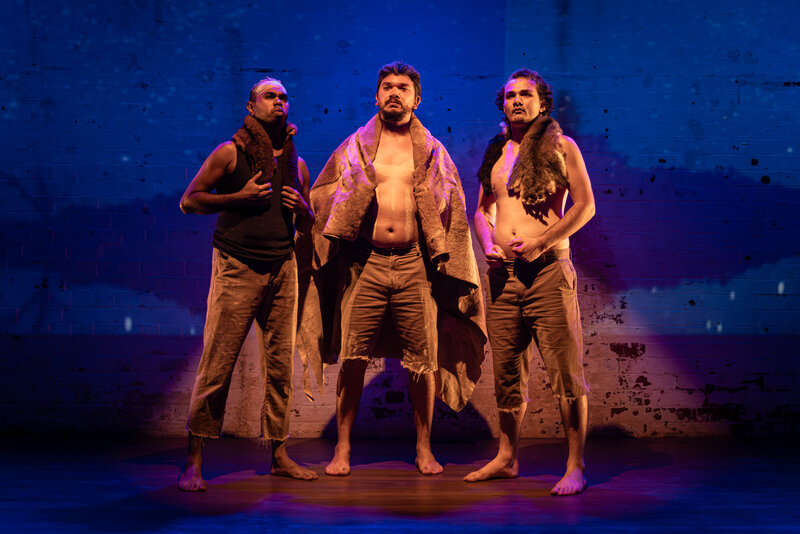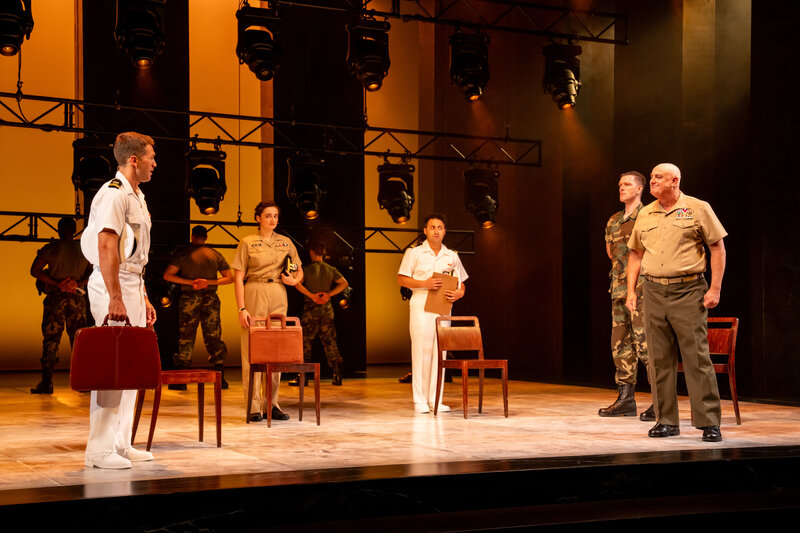Excellent pacing, a strong ensemble cast, a rich and attractive set and a ripping good whodunit are the hallmarks of this Agatha Christie masterpiece. Christie regarded it as her favourite of the 80 plus novels and plays she wrote.
It was first published in the UK as a book titled Ten Little N*ggers in November 1939, named after the British blackface song, which serves as a major plot point. The US edition went on sale a month later and its American reprints and adaptations were all re-titled And Then There Were None, the last five words in the original American version of the nursery rhyme Ten Little Indians. The play, which featured a different ending to the novel, came out in 1943.
 Ten people – including the hired help, being a husband and wife – have been lured to Soldier Island under different pretexts. We learn that each has been complicit in the death of other human beings, but either escaped justice or committed an act that was not subject to legal action. They are “charged” with their respective crimes via a record that the male servant was asked to play after dinner the first night they are all together. They are told they were brought to the island to pay for their actions. No one else is there with them and they cannot escape due to their distance from the mainland and the inclement weather. One by one, they are killed in a manner that seems to parallel the deaths in the nursery rhyme. But who is responsible? Who will be the last man or woman standing?
Ten people – including the hired help, being a husband and wife – have been lured to Soldier Island under different pretexts. We learn that each has been complicit in the death of other human beings, but either escaped justice or committed an act that was not subject to legal action. They are “charged” with their respective crimes via a record that the male servant was asked to play after dinner the first night they are all together. They are told they were brought to the island to pay for their actions. No one else is there with them and they cannot escape due to their distance from the mainland and the inclement weather. One by one, they are killed in a manner that seems to parallel the deaths in the nursery rhyme. But who is responsible? Who will be the last man or woman standing?
And Then There Were None was Agatha Christie’s best selling novel, racking up sales in excess of 100 million. When you see the play it is not hard to see why because the lure is there from the start and we, the audience, try to work out all the way through who is doing what to whom … and who will be next.
I particularly appreciated the first act – which runs for 70 minutes. The set up and first dastardly deeds are compelling and methodical. Only three deaths occur, but that only serves to deepen the mystery. The bulk of the murder and mayhem, then, is left for the second act, only 45 minutes in duration. To me it seemed a bit too “helter skelter” as one after another were “knocked off”. The drama almost seemed to give way to slapstick and I felt some of the tension dissipated as a result.
 I nevertheless applaud director Nicholas Opolski, in his third production with Malvern Theatre Company, for tightening some of the dialogue, which he felt had been overwritten. He also took elements of the material that occurs offstage and brought it in front of the audience. The piece largely benefits as a result.
I nevertheless applaud director Nicholas Opolski, in his third production with Malvern Theatre Company, for tightening some of the dialogue, which he felt had been overwritten. He also took elements of the material that occurs offstage and brought it in front of the audience. The piece largely benefits as a result.
I made mention earlier of the set, a homely lounge room with two-tone walls, white clay statues on the mantelpiece and see through doors than open out onto the ocean below (which we never see). With its creature comforts and lavish accoutrements it’s a place I would love to call home … although without the loss of life!
And Then There Were None, being staged by Malvern Theatre Company is playing at 29 Burke Road, East Malvern until 2nd July.
Alex First

David Edwards is the former editor of The Blurb and a contributor on film and television




